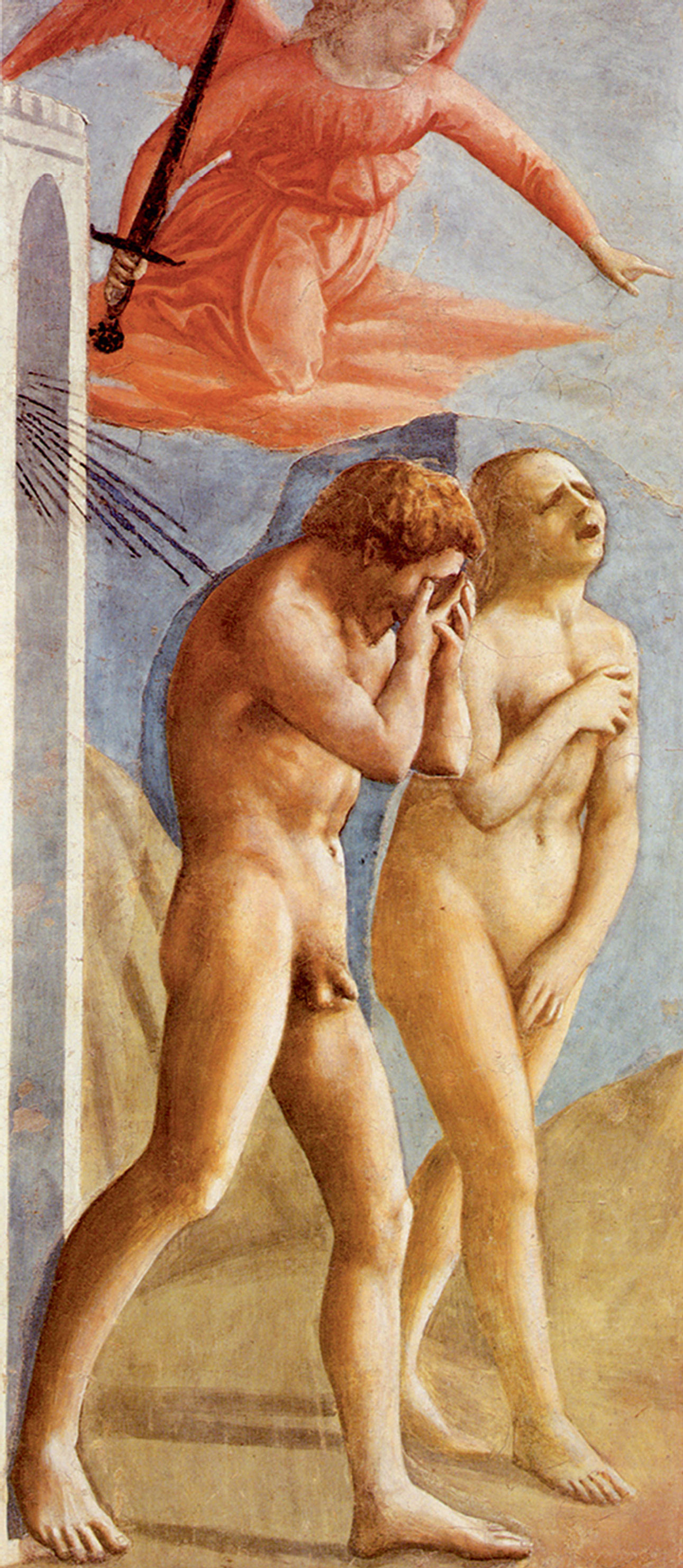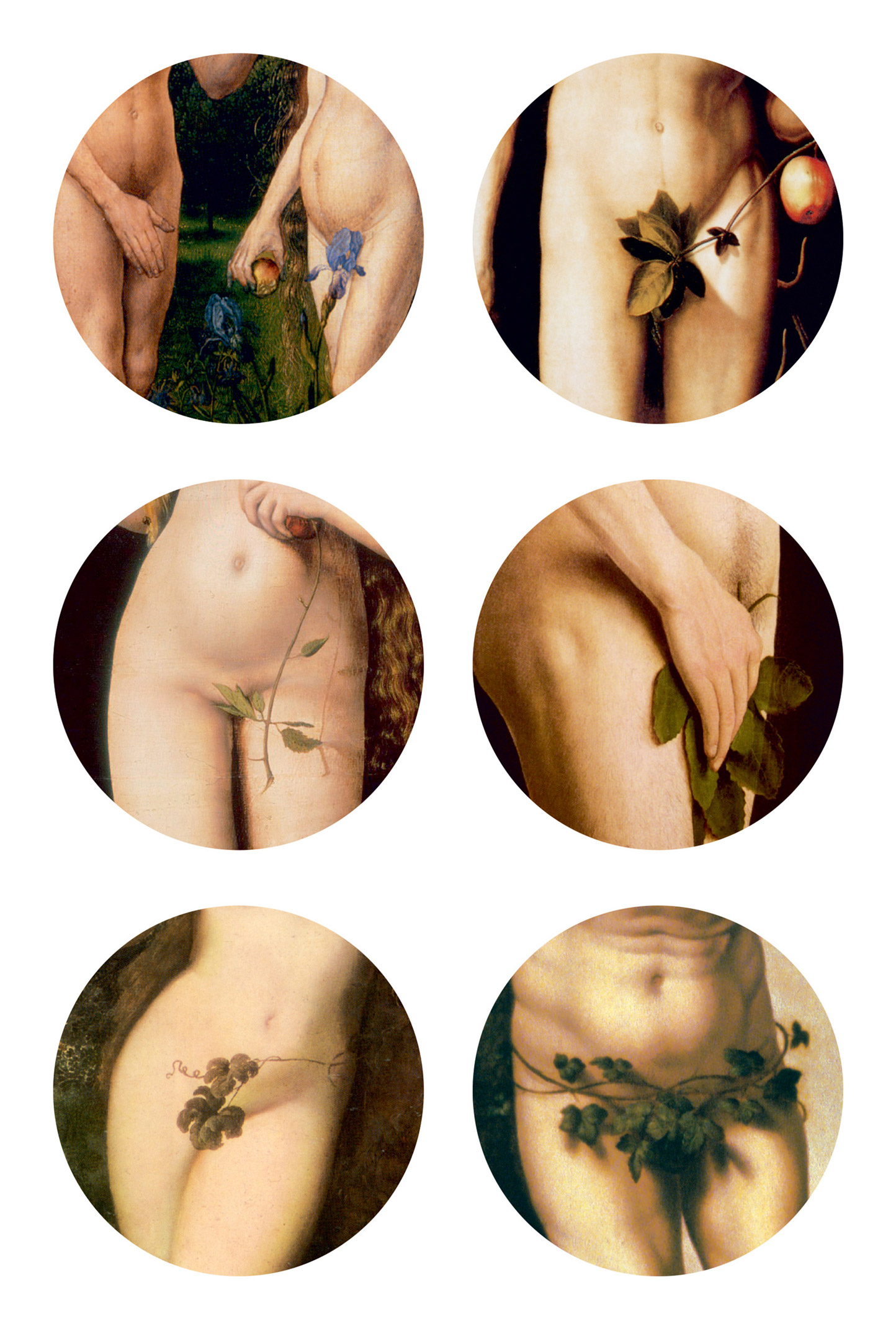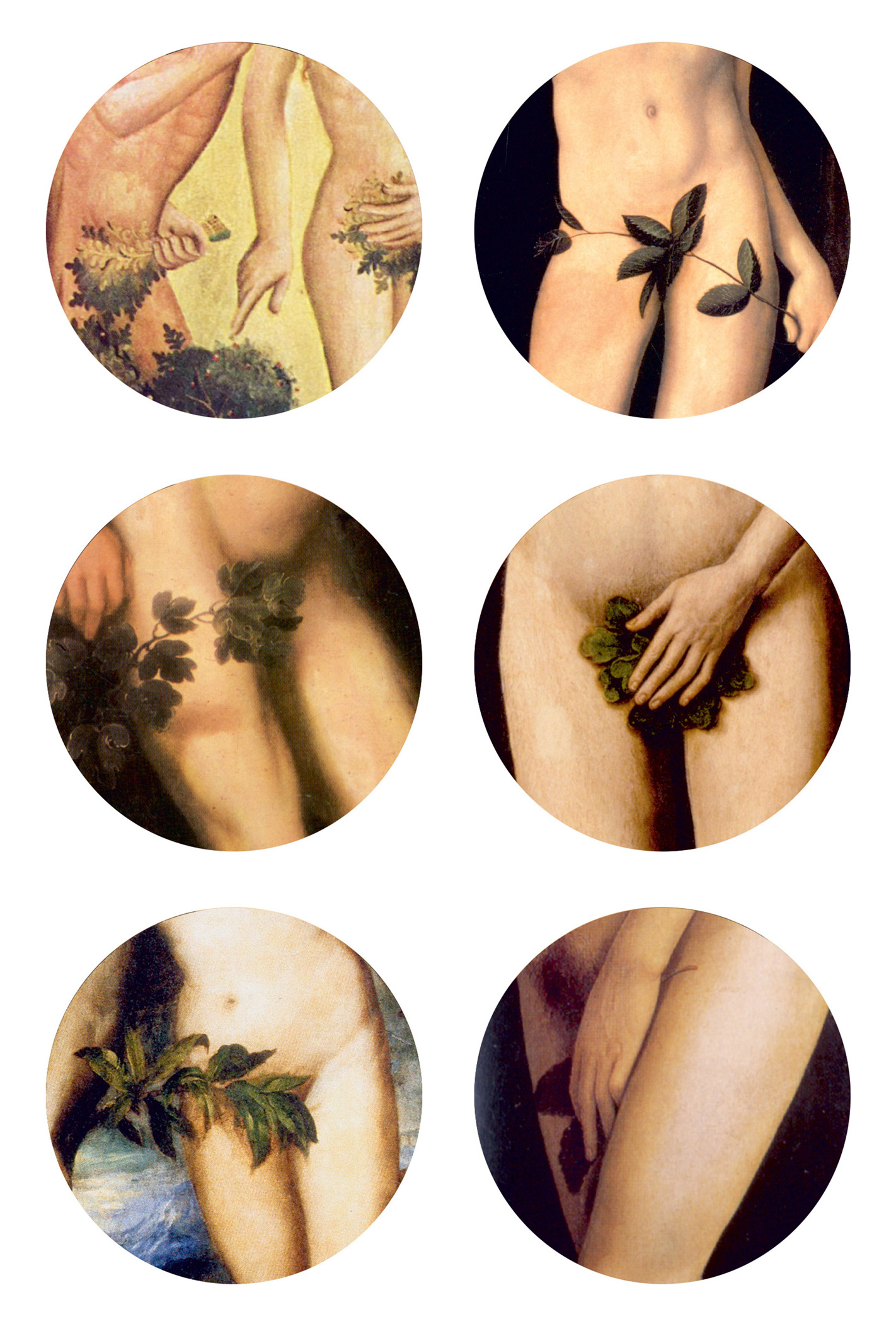In the Garden
Something to hide
Alan Jacobs
It was not guilt they felt, not at first. That would come later, after instruction. Guilt must be learned; shame, it appears, comes naturally.
The story is so brief that even a mere summary of it amounts to commentary. The man and the woman were placed in the garden and allowed to eat the fruit of every tree there save one, “the tree of knowledge, good and evil”—I am using Robert Alter’s translation—”for on the day you eat from it, you are doomed to die.” But the serpent told the woman they would not die: instead, “your eyes will be opened and you will become as gods knowing good and evil.”
And the woman saw that the tree was good for eating and that it was lust to the eyes and the tree was lovely to look at, and she took of its fruit and ate, and she also gave to her man, and he ate. And the eyes of the two were opened, and they knew they were naked, and they sewed fig leaves and made themselves loincloths.
Did they repent of their disobedience? Did they sense that the doom of death had fallen on them? Did they think, “The serpent was right—we are indeed as gods in our new knowledge”? Any of the above is possible; in reading this strange text we should never infer too much from silence, of which there is a great deal. Our author merely tells us: they were ashamed. We know that this concept is important to him because he had concluded his account of the Creation by writing, “And the two of them were naked, the human and his woman, and they were not ashamed.” The tale of the world’s making ends with the thought that the first couple had no shame; but it is a précis of their fall, and the breaking of all things, to say that shame came upon them.

Since the 1940s, anthropologists have distinguished between shame-cultures and guilt-cultures. People who belong to the latter suffer from an inner sense that they have transgressed some immutable law, and the hiddenness of that transgression can intensify the pain: thus the feeling of relief that can accompany confession in such cultures. But in shame-cultures, exposure is the great evil: not to transgress, but to have one’s transgressions revealed. Thus in the Iliad, when Andromache begs her beloved Hector to stay in the city rather than return to the fighting, he replies that he cannot, for the shame of doing so would be too terrible.
What the man and the woman feel, in their garden, is not the pricking of guilt but the panicky flush of exposure. So before all else—even before they hide themselves in the woods for fear—they sew coverings for themselves from fig leaves. (Why fig leaves? Perhaps merely because of the leaves’ size.) Even fear of God’s wrath must be set aside so that the shame of nakedness can be removed.
But they are morally naked too—their deeds exposed as fully as their genitals—and help for this exposure must come from words, not leaves:
And the Lord God called to the human and said to him, “Where are you?” And he said, “I heard Your sound in the garden and I was afraid, for I was naked, and I hid.” And He said, “Who told you that you were naked? From the tree I commanded you not to eat have you eaten?” And the human said, “The woman whom you gave by me, she gave me from the tree, and I ate.” And the Lord God said to the woman, “What is this you have done?” And the woman said, “The serpent beguiled me and I ate.”
The words both cover and deflect: the man seeks to turn God’s eye towards the woman, the woman towards the serpent. The man even suggests that their misery arose from a poor decision on the Lord God’s own part: “The woman whom you gave.”
But exposure cannot really be undone; what is revealed remains, in memory and image, even after it has been re-hidden. The words of the man and woman are transparently evasive. Likewise, the fig leaves merely call attention to what they are meant to hide, and in fact are another kind of evasion, another way of passing the blame, this time not to a creature or Being but to a part of the body, as though the sexual organs acted of their own accord—even though sexuality clearly plays no part in the story, in either its prohibitions or its rebellions. St. Augustine would be fooled by the leaves, and would preach to his congregation: If you want to know where your rebellion comes from, Ecce unde! Behold the place!

Right column, from top to bottom: Hans Baldung Grien, Adam and Eve, 1507. / Hubert and Jan van Eyck, The Ghent Altarpiece, ca. 1432. / Jan Gossaert, Adam and Eve, ca. 1520.

Right column, from top to bottom: Lucas Cranach the Elder, Adam and Eve, 1528. / Hans Memling, Adam and Eve, ca. 1485. / Hubert and Jan van Eyck, The Ghent Altarpiece, ca. 1432.
So shame, which rightly belongs to the rebellious human will, gets deflected to the genitals, and every fig leaf so strategically placed reinforces the deflection. Our sexual organs become pudenda, literally “the shameful parts.” It’s curious that this term is more often used to describe women’s anatomy. Consider, for instance, Masaccio’s great Expulsion from the Garden of Eden: Adam bends forward in grief, his hands covering his eyes—but the eyes of the two, once opened, can’t truly be closed—and his penis clearly visible. This is intentional: we see him from the right, with his left foot forward. Had Masaccio placed the right foot forward, our view would have been blocked. But we see Eve’s wailing face clearly, because her right hand covers her breasts, her left her vulva, which is partly obscured anyway by her right leg. She and Adam are out of step. Adam’s posture suggests that he does not want to see, Eve’s that she does not want to be seen, though no one could be looking, as the angel with the flaming sword hovers behind them. Everything in their portrayal suggests that they feel two different shames. Adam’s is closer to the Biblical account, Eve’s to the Augustinian shifting of responsibility to the genitals, the pudenda. If Adam’s shame comports with the Genesis narrative, Masaccio’s overall depiction seems not to, since we are told that God clothed them in “skin coats” before he dismissed them from their Garden. But Masaccio restores them to the moment they discovered their nakedness, thus telescoping the story, emphasizing the connection between exposure and expulsion.
Some centuries later, one of the Medicis ordered fig leaves painted onto the bodies of Masaccio’s Adam and Eve, though presumably not out of a concern for Biblical fidelity. It became common to correct the artists of the Renaissance in this way: some of the classical statuary at the Vatican was similarly covered, and when the Duke of Tuscany presented Queen Victoria with a plaster replica of Michaelangelo’s David in 1857 (cast from the original), she immediately gave the thing to the South Kensington Museum—now the Victoria & Albert—whose authorities in turn commissioned a fig leaf to give the Biblical hero proper coverage. As V&A documents tell the story, the plaster leaf “was then kept in readiness for any royal visits, when it was hung on the figure using two strategically placed hooks.” Today, David has regained his original nudity, but the leaf has been preserved: it sits in its own case just behind the statue, which is a good thing, for the leaf is a fine piece of work, elegantly formed.
We all know, or think we know, about “Victorian prudishness,” but even as we smile we should remember to distinguish the link between sex and sin from the link between nudity and shame. The former was not created by Augustine, but he is our primary source for it, and he forged that link so strongly that for many centuries it has been hard to see the nude Adam and Eve without thinking Augustinian thoughts. It might never occur to us that the miserable pair could be ashamed not of their organs’ connection with sex but rather with the elimination of waste. (In some cultures this is a far more private matter than sex.) But if we could purge all such Augustinian assumptions from our minds, we would still be left, I think, with some discomfort—or, the story suggests, that’s what we should feel. How do we experience the nakedness of our First Parents? To take an oddly echoing episode from later in Genesis that clearly has no sexual context: Are we like Ham, the son of Noah, who not only looked upon his father’s nakedness as the old man lay drunk in his tent but also told his brothers about it? Do we, like Ham, experience no sense that Noah’s nakedness was shameful, no desire to cover him and restore him to decency? Or would we be like Ham’s brothers, who turned their heads away as they covered Noah and thereby saved him from further shame? The text says that when Noah awoke he “knew what his youngest son had done to him.” We think, done to him? What have we done to Adam and Eve by looking upon their nakedness? Yet for his impudence Ham was cursed.
W. H. Auden, thinking of statues and saints, wrote that “The blessed will not care what angle they are regarded from, / Having nothing to hide.” But we are not among the blessed; like Adam and Eve and Noah, we have much to hide, much that we would not have exposed. And nudity, while it can stand for many other human conditions—innocence, blessedness, desire—remains our strongest image of that exposure, that shame.
Alan Jacobs teaches English at Wheaton College in Illinois. His most recent book is Original Sin: a Cultural History (HarperOne, 2008), and he is currently writing about trees.